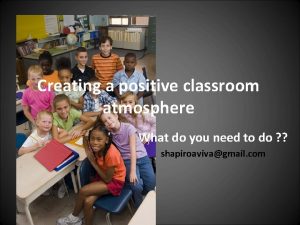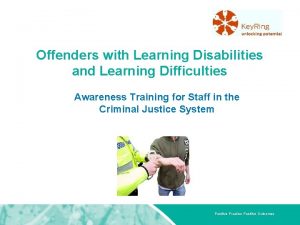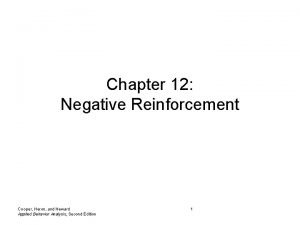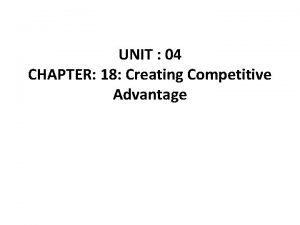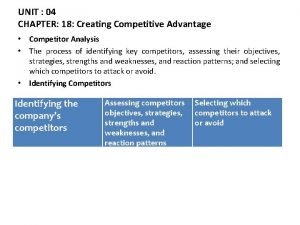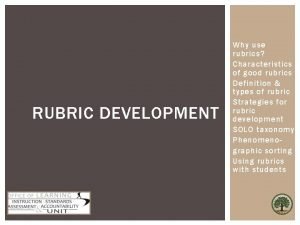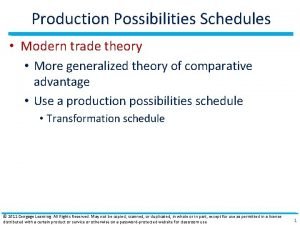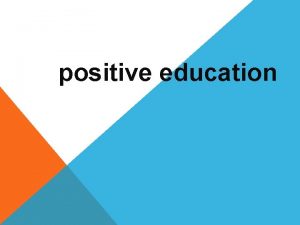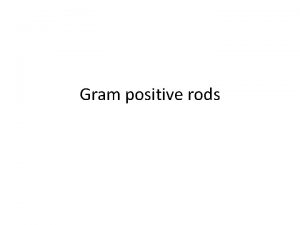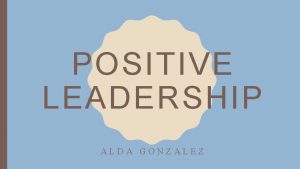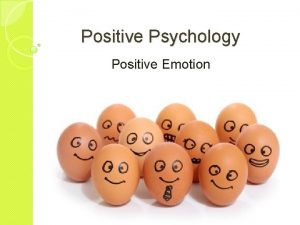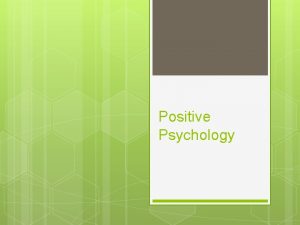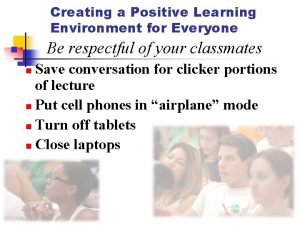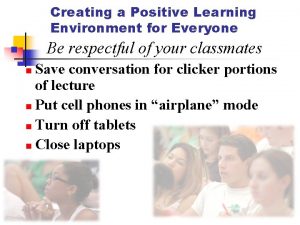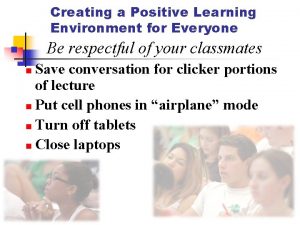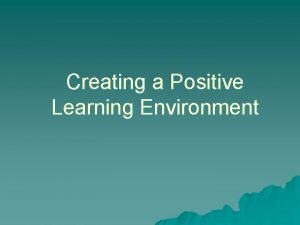CREATING A POSITIVE LEARNING ENVIRONMENT PositiveSafe Learning Environment














- Slides: 14

CREATING A POSITIVE LEARNING ENVIRONMENT Positive/Safe Learning Environment Integration of Students into Clinical Learning Settings Providing Formative and Summative Feedback

The learning environment is the physical, social, and psychological context in which a student learns. A supportive learning environment contributes to student well-being and enhances student empathy, professionalism, and academic success, whereas an unsupportive learning environment may lead to burnout, exhaustion, and cynicism. WHAT IS THE LEARNING ENVIRONMENT?



SAFE LEARNING ENVIRONMENT STUDENT MISTREATMENT The Association of American Medical Colleges (AAMC) identifies eight general areas of student mistreatment: Public belittlement or humiliation Threats of physical harm or actual physical punishment Requirements to perform personal services, such as shopping Being subjected to unwanted sexual advances Being asked for sexual favors in exchange for grades Being denied opportunities for training because of gender, race/ethnicity or sexual orientation Being subjected to offensive remarks/names directed at you based on gender, race/ethnicity or sexual orientation Receiving lower grades or evaluation based on gender, race/ethnicity or sexual orientation

Medicare Claims Processing Manual Chapter 12 - Physicians/Nonphysician Practitioners 100. 1. 1 - Evaluation and Management (E/M) Services (Rev. 3971, Issued: 02 - 18, Effective: 01 -01 -18, Implementation: 03 - 05 -18) B. E/M Service Documentation Provided By Students Any contribution and participation of a student to the performance of a billable service (other than the review of systems and/or past family/social history which are not separately billable, but are taken as part of an E/M service) must be performed in the physical presence of a teaching physician or physical presence of a resident in a service meeting the requirements set forth in this section for teaching physician billing. Students may document services in the medical record. However, the teaching physician must verify in the medical record all student documentation or findings, including history, physical exam and/or medical decision making. The teaching physician must personally perform (or re-perform) the physical exam and medical decision making activities of the E/M service being billed, but may verify any student documentation of them in the medical record, rather than redocumenting this work


SAFE LEARNING ENVIRONMENT STUDENT MISTREATMENT The Association of American Medical Colleges (AAMC) identifies eight general areas of student mistreatment: Public belittlement or humiliation Threats of physical harm or actual physical punishment Requirements to perform personal services, such as shopping Being subjected to unwanted sexual advances Being asked for sexual favors in exchange for grades Being denied opportunities for training because of gender, race/ethnicity or sexual orientation Being subjected to offensive remarks/names directed at you based on gender, race/ethnicity or sexual orientation Receiving lower grades or evaluation based on gender, race/ethnicity or sexual orientation



Set expectations Identify feedback Establish mutual goals Safe Environment Reinforce the positive Make it bidirectional

UNDERSTAND GENERATIONAL DIFFERENCES • Millennials Learn Differently than Previous Generations • Structured Upbringing • Concise communication using technology • Immediate gratification • Transparency in Relationships

Students Will Learn And Function Best When… Students have structure SET EXPECTATIONS Give tasks and explain the context and reasoning behind the task – this will support autonomy in the future Students have a structure that allows them to take responsibility Allow autonomy and allow students to know they have autonomy – this conveys trust Allow ownership – ownership enables the hardest work Students have a supportive environment Be available and provide support – Avoid paternalistic or authoritarian approach Praise and positive reinforcement everyone needs to succeed a little each day Students need expert coaching Precepting = coaching SAFE LEARNING ENVIRONMENT Kackman, J. Leading Teams. 2002. Harvard Business School Publishing Co. Boston. Dutton, J. Energize Your Workplace. 2003. John Wiley & Sons, Inc. Hoboken, NJ.

Assessment is the opportunity to consider the stage and progress of the learner. It flows naturally once expectations are set Feedback is the opportunity to turn an assessment into a vehicle for growth for the learner
 Classroom atmosphere
Classroom atmosphere Creating an english environment
Creating an english environment S. agalactiae catalase test
S. agalactiae catalase test Adding and subtracting negative numbers rules
Adding and subtracting negative numbers rules Positive practice positive outcomes
Positive practice positive outcomes Example of positive feedback geography
Example of positive feedback geography Financial environment in business environment
Financial environment in business environment Cuadro comparativo e-learning y b-learning
Cuadro comparativo e-learning y b-learning Positive vs negative reinforcement
Positive vs negative reinforcement Blake elohim creating adam
Blake elohim creating adam Chapter 18 creating competitive advantage
Chapter 18 creating competitive advantage Competitor centered company
Competitor centered company Dino the dinosaur text structure
Dino the dinosaur text structure Characteristics of a good rubrics
Characteristics of a good rubrics Creating production possibilities schedules and curves
Creating production possibilities schedules and curves
